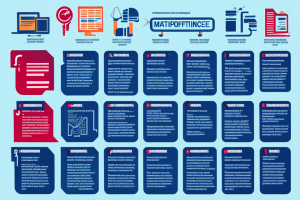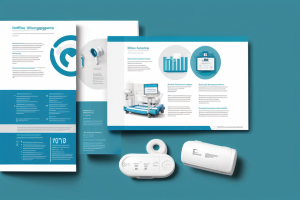
Maintenance is an essential aspect of any system, whether it’s a machine, a building, or a piece of equipment. It’s the process of regularly checking and repairing any damage or wear and tear to ensure that everything is in good working order. But why is maintenance so important? In this article, we’ll explore three key reasons why maintenance is necessary for any system to function optimally. From improving efficiency to preventing costly breakdowns, these reasons will show you why maintenance should never be overlooked.
Reason 1: Prevent equipment breakdowns
Importance of preventative maintenance
Preventative maintenance is a critical aspect of ensuring that equipment functions optimally and reduces the likelihood of unexpected breakdowns. By following a regular maintenance schedule, businesses can reap several benefits, including:
- Reduces downtime: Unexpected equipment breakdowns can lead to significant downtime, resulting in lost productivity and revenue. Preventative maintenance helps to identify potential issues before they become major problems, reducing the likelihood of unexpected downtime.
- Increases equipment lifespan: Regular maintenance helps to keep equipment in good working condition, which can extend its lifespan. By identifying and addressing potential issues early on, businesses can avoid costly repairs or replacements down the line.
- Lowers repair costs: Regular maintenance can help to identify small issues before they become major problems, reducing the need for costly repairs. In addition, by identifying potential issues early on, businesses can avoid the need for emergency repairs, which can be much more expensive.
Overall, preventative maintenance is essential for ensuring that equipment functions optimally and reduces the likelihood of unexpected breakdowns, resulting in increased productivity, revenue, and cost savings.
Types of preventative maintenance
Preventative maintenance is a critical aspect of maintaining equipment to prevent unexpected breakdowns and costly repairs. There are three main types of preventative maintenance: scheduled maintenance, condition-based maintenance, and predictive maintenance.
Scheduled maintenance
Scheduled maintenance involves performing routine maintenance tasks at predetermined intervals, regardless of the equipment’s condition. This type of maintenance is often based on the manufacturer’s recommendations or industry standards. Scheduled maintenance can include tasks such as oil changes, filter replacements, and inspections.
Condition-based maintenance
Condition-based maintenance involves performing maintenance tasks based on the actual condition of the equipment. This type of maintenance uses sensors and monitoring systems to track the equipment’s performance and identify when maintenance is needed. Condition-based maintenance can help to reduce downtime by ensuring that maintenance is performed only when it is needed.
Predictive maintenance
Predictive maintenance involves using advanced analytics and machine learning algorithms to predict when maintenance will be needed based on historical data and real-time sensor data. Predictive maintenance can help to identify potential issues before they become serious problems, allowing for proactive maintenance that can prevent equipment failures.
Overall, implementing a comprehensive preventative maintenance program can help to reduce downtime, extend the life of equipment, and save money on repairs and replacements.
Reason 2: Ensure workplace safety
Role of maintenance in workplace safety
- Identifying and addressing hazards
- Ensuring equipment is safe to use
- Maintaining a clean and organized work environment
Identifying and addressing hazards
Maintenance plays a crucial role in identifying and addressing hazards in the workplace. By conducting regular inspections and maintenance checks, maintenance personnel can identify potential hazards before they become a serious safety issue. For example, a malfunctioning machine can pose a serious threat to worker safety, but regular maintenance can help prevent such incidents from occurring.
Ensuring equipment is safe to use
In addition to identifying hazards, maintenance personnel also ensure that equipment is safe to use. This includes performing routine maintenance tasks such as lubricating moving parts, replacing worn components, and checking electrical connections. By ensuring that equipment is in good working order, maintenance personnel can help prevent accidents and injuries in the workplace.
Maintaining a clean and organized work environment
A clean and organized work environment is essential for maintaining safety in the workplace. Maintenance personnel play a key role in keeping the workplace clean and organized by performing tasks such as cleaning and disinfecting surfaces, disposing of waste properly, and ensuring that tools and equipment are stored safely. By maintaining a clean and organized work environment, maintenance personnel can help prevent slip and fall accidents, reduce the risk of illnesses, and improve overall safety in the workplace.
Examples of safety-related maintenance tasks
Effective maintenance programs can play a critical role in ensuring workplace safety. Here are some examples of safety-related maintenance tasks that can help prevent accidents and injuries:
- Electrical system inspections: Regular inspections of electrical systems, including wiring, outlets, and breakers, can help identify potential hazards and ensure that electrical equipment is functioning safely.
* Machine guarding: Guarding machines, such as by using barriers or shields, can help prevent contact with moving parts and reduce the risk of accidents. - Fall protection equipment inspections: Regular inspections of fall protection equipment, such as harnesses and anchors, can help ensure that they are in good condition and ready to use in the event of a fall.
By implementing these safety-related maintenance tasks, organizations can reduce the risk of accidents and injuries, and create a safer work environment for employees.
Reason 3: Compliance with regulations and industry standards
Importance of compliance
Avoiding fines and legal issues
One of the most significant reasons to maintain compliance with regulations and industry standards is to avoid fines and legal issues. Depending on the industry, there may be various laws and regulations that govern the way businesses operate. These laws often dictate the minimum standards for safety, health, and environmental protection. Failure to comply with these regulations can result in fines, penalties, and even legal action. For instance, in the manufacturing industry, the Occupational Safety and Health Administration (OSHA) sets forth safety standards that employers must follow to ensure the safety of their employees. Non-compliance with these standards can result in costly fines and legal action.
Ensuring a safe work environment
Another critical aspect of compliance is ensuring a safe work environment for employees. Regulations and industry standards often require businesses to maintain specific safety measures to prevent accidents and injuries. Failure to comply with these standards can result in accidents and injuries, which can lead to costly litigation and employee compensation claims. Additionally, non-compliance can lead to a poor safety culture within the organization, which can negatively impact employee morale and productivity.
Maintaining a positive reputation
Finally, compliance with regulations and industry standards is essential for maintaining a positive reputation within the industry and the community. Compliance demonstrates a commitment to ethical business practices and responsible behavior. Failure to comply with regulations and industry standards can lead to a negative reputation, which can harm the business’s relationships with customers, suppliers, and partners. In addition, a negative reputation can make it difficult for the business to attract new customers and partners, which can ultimately lead to a decline in revenue and profitability.
Overall, compliance with regulations and industry standards is crucial for businesses to avoid fines and legal issues, ensure a safe work environment, and maintain a positive reputation. By prioritizing compliance, businesses can mitigate risks, build trust with stakeholders, and operate ethically and responsibly.
Common regulations and industry standards
In today’s world, it is essential for businesses to comply with various regulations and industry standards. Failure to do so can result in significant penalties, legal consequences, and even closure of operations. In this section, we will discuss some of the common regulations and industry standards that businesses need to consider when it comes to maintenance.
Occupational Safety and Health Administration (OSHA) regulations
The Occupational Safety and Health Administration (OSHA) is a government agency responsible for ensuring safe and healthy working conditions for employees. OSHA regulations cover a wide range of areas, including electrical systems, fire protection, hazardous materials, and machine guarding. It is crucial for businesses to comply with these regulations to avoid costly fines and ensure the safety of their employees.
Environmental Protection Agency (EPA) regulations
The Environmental Protection Agency (EPA) is responsible for protecting human health and the environment. EPA regulations cover areas such as air and water pollution, hazardous waste management, and pesticide use. Businesses that operate in environments with potential environmental risks must comply with these regulations to avoid fines and legal consequences.
Industry-specific standards (e.g., ISO 9001, AS9100)
In addition to OSHA and EPA regulations, businesses must also comply with industry-specific standards. These standards vary depending on the industry and can include quality management systems (e.g., ISO 9001), aerospace quality management systems (AS9100), and food safety management systems (e.g., SQF). Compliance with these standards is crucial for businesses to maintain their reputation, meet customer requirements, and avoid costly penalties.
Overall, compliance with regulations and industry standards is crucial for businesses to avoid legal and financial consequences. Proper maintenance is essential to ensure compliance with these standards and regulations, as well as to maintain the safety and efficiency of equipment and facilities.
Key maintenance activities for compliance
Recordkeeping
One of the key maintenance activities for compliance is recordkeeping. This involves maintaining detailed records of all maintenance activities, including equipment history, maintenance schedules, and maintenance work orders. This documentation helps organizations to track equipment performance, identify potential issues before they become problems, and ensure that all maintenance activities are conducted in accordance with regulatory requirements.
Training employees
Another important maintenance activity for compliance is training employees. Regular training helps ensure that employees are up-to-date on the latest industry standards and regulations, and that they have the knowledge and skills needed to perform their maintenance tasks effectively. This training should cover topics such as safety procedures, equipment operation, and maintenance techniques, and should be provided on an ongoing basis to ensure that employees are always up-to-date.
Conducting regular audits
Finally, conducting regular audits is an essential maintenance activity for compliance. These audits should be conducted by qualified professionals who can assess the organization’s maintenance practices and identify any areas where improvements can be made. The audits should cover all aspects of the maintenance program, including equipment performance, maintenance schedules, and recordkeeping practices. By conducting regular audits, organizations can ensure that they are in compliance with all relevant regulations and industry standards, and that they are maintaining their equipment to the highest possible standards.
FAQs
1. What is maintenance?
Maintenance refers to the practice of regularly inspecting, cleaning, and repairing equipment or systems to ensure they continue to function properly. It is an essential part of keeping any machine, building, or infrastructure in good working order.
2. Why is maintenance important?
There are several reasons why maintenance is important. Firstly, it helps to prevent equipment breakdowns, which can result in costly repairs or even lost revenue if the equipment is out of service for an extended period. Secondly, regular maintenance can help to extend the lifespan of equipment, reducing the need for frequent replacements and saving money in the long run. Finally, maintenance can also help to improve the safety and efficiency of equipment, reducing the risk of accidents and increasing productivity.
3. What are the three key reasons to consider when it comes to maintenance?
The three key reasons to consider when it comes to maintenance are:
1. Preventative maintenance: Regular inspections and maintenance can help to identify potential problems before they become serious, allowing for timely repairs and reducing the risk of equipment failure.
2. Safety: Well-maintained equipment is less likely to malfunction or cause accidents, making it essential for ensuring the safety of workers and users.
3. Cost savings: By keeping equipment in good working order, regular maintenance can help to extend its lifespan and reduce the need for costly replacements, ultimately saving money in the long run.






